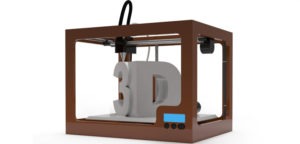Potentially one of the most innovative technological advances of 2015, is 3D printing. 3D printing opens the door for various and more efficient methods of medical innovation that may change how we deal with prosthetic limbs, and DNA-based reconstruction. As the year moves on, the medical industry will have to see how 3D printing fits as a competitive factor and a component of product portfolios.
3D Printing will allow doctors to generate plans for medical devices such as prosthetic limbs, medical equipment, human tissue and bones, and human body part replacements, and print them directly off a computer. This will provide the device industry with greater variety in manufacturing technologies, and much greater manufacturing speed: it is 25 to 100 times faster than the commercial machines that create prosthetic equipment. It will also greatly reduce costs: it will cost $4 to print a cubic inch of material. Even though the initial set up cost is higher, 3D printing has become cheaper than labor in third world countries. 3D printing is a new efficient and extremely useful technology.
However, with many pros that this new technology brings, there are a few concerns with 3D printing. One of the reasons 3D printing may be detrimental economically is because it will effectively decrease prosthesis jobs. This can have a large impact on economies of third world countries, who depend on low skill labor jobs. It is also a bit unclear as to how correctly the technology will function, or how often it will function correctly. There is an opportunity growth for new segment of services centered on the maintenance, construction, and the plans of the material being printed on 3D printers. Exploration into the care of patients with 3D printed materials is still being looked into as well.
3D printing opens the door for many new, intriguing possibilities in the medical industry. While 3D printing is cost efficient and extremely useful, it certainly has its downfalls in the fact that the process of fabricating, distributing and effectively using 3D printed materials is not yet clear and the loss of low skill labor jobs in producing prosthetic limbs may affect third world nation’s economies. As we move through the rest of the year and onto the upcoming ones, it will be very interesting to monitor the growth of the 3D printing industry and to observe how it will affect the medical industry, either positively or negatively.
Please follow us on twitter @HCRSourcing!
